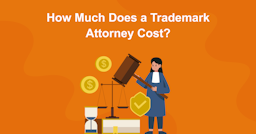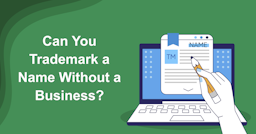Resources
Simplifying The Patent Filing Process
Amrusha Chati
25 August 2023 • 4 min read

Creating something new can be incredibly exciting.
A fresh idea, the possibilities, the puzzles you solve as you try to make it a reality... nothing compares to the thrill. Unfortunately, this thrill is often followed by chills when creators have to file a patent to protect their creations!
A patent is an exclusive right granted by a country to an inventor. It provides a crucial layer of patent protection for a right to use an invention. It excludes others from using, making, and selling your product or invention for 20 years.
After that, it has to be renewed, or it goes into the public domain by default.
In the US, patents are filed with the federal regulatory authority, the United States Patent and Trademark Office (USPTO), and it can be a little daunting for someone unfamiliar with the patent process and jargon involved.
So, we decided to break it down to make the patent process easier to understand so you can take this crucial step towards protecting your intellectual property.
The most important thing to remember for a patent is that your product must have something unique about it. Think about what sets it apart from all other products.
That forms the entire basis of your request to secure patent protection. So, the first step is to objectively identify all elements of design, utility, material, or any other aspect you think your product might be the first of its kind.
(Read about why startups should patent now, not later.)
The next step after identifying your strengths is finding your weaknesses.
Are there any similar products out there? If someone has already created a similar product or process in the past, they’re likely to have a patent for it already.
This would pose a problem for you. You could be accused of patent infringement and be liable for any litigation that might follow.
It’d be helpful at this stage to keep your patent search as wide as possible in case there’s a prior patent in another country. If you intend to carry out this search by yourself, you could use some of the USPTO website resources or seek a professional’s help.
The United States Patent and Trademark Office (USPTO) also requires that you disclose any publication, patent, or other written document you know of when filing. Failure to do so could lead to disqualification of your patent, even after it has been issued.
Rome wasn’t built in a day, and neither is your product likely to be. But while you’re experimenting and fine-tuning your product to make it perfect, it might be a good idea to file a provisional patent application and seek patent protection.
A provisional patent application provides proof of the date of your invention from the moment it’s submitted. Filing a provisional patent is often the fastest, most efficient way of starting the process of protecting your inventive concept. It also buys you a year to file the patent application.
However, keep in mind that you can’t add anything new. Suppose your final prototype has components or features you didn’t mention in the provisional patent application. In that case, you’ll need to file a new application. So ensure you do this when you’re in the last stages of creating your product, with no significant changes planned.
When applying for a patent, it’s essential to specify what aspect of the product you wish to patent and protect.
Design patents are perfect for anyone who invents a new, original, and/or ornamental design for a product. A design patent protects the physical shape of unique product designs, which means it’s related to the look or appearance of your product.
On the other hand, a utility patent, as the name suggests, protects novel, non-obvious functional aspects of your invention. This includes new concepts, processes, methods of manufacture, or composition of matter.
Utility patents prohibit other individuals or companies from making, using, or selling your invention without legal authorization.
Deciding which patent is suitable for you, or if you need to file multiple patent applications, will prevent you from making mistakes or omissions that could be more tricky and costly to fix later in the process.
The patent application process can sometimes be lengthy and complex. It requires a high degree of attention to detail and patience. It’s possible to do it independently, but the application has multiple parts. And even minor errors could become grounds for delay or dismissal of an application.
Hence, seeking professional assistance from a registered patent attorney at this stage is advisable. It may help you avoid mistakes on your patent registration that could cost you considerable time and money to rectify further down the road.
Keep in mind that the whole process takes a while.
Once the application has been submitted, prepare to wait for up to a year or more from the filing date to hear back from the patent office.
Even then, be prepared for arguments from the patent examiner against the uniqueness or eligibility of your products (office actions). You’ll need to address or refute these.
This later stage especially can be tricky since it requires a thorough knowledge of trademark and patent law. It’d be better to work with a patent attorney on this. They can help you find a way to argue your case convincingly with the USPTO and in case of a patent trial.
Not sure how much a patent costs? Learn about it on our blog, with insights from Spencer Keller, patent attorney at Trademarkia.
A patent allows the owner the right to exclude others from making, using, offering for sale, selling, or importing the invention into the United States. A patent can be co-owned jointly by two or more owners. Also, the original owner can assign a partial interest in a patent to someone else. However, a patent owner can’t outright sell a patent as a whole.
A US patent is usually granted for 20 years from the date of patent filing. But, periodic fees have to be paid to maintain the protection of the patent. These maintenance fees are due 3 ½, 7 ½, and 11 ½ years from the date the patent is granted. These fees only apply to utility patents, not plant and design patents.
The rates for patent licensing royalties are fixed when two people enter a patent licensing deal. Patent royalties are payments made by the licensee to the licensor for the use of the patent. They are usually a percentage of the revenue generated by the patent, although they can sometimes be agreed upon as a fixed fee.
AUTHOR
Amrusha is a versatile professional with over 12 years of experience in journalism, broadcast news production, and media consulting. Her impressive career includes collaborating extensively with prominent global enterprises. She garnered recognition for her exceptional work in producing acclaimed shows for Bloomberg, a renowned business news network. Notably, these shows have been incorporated into the esteemed curriculum of Harvard Business School. Amrusha's expertise also encompassed a 4-year tenure as a consultant at Omidyar Network, a leading global impact investing firm. In addition, she played a pivotal role in the launch and content strategy management of the startup Live History India.
Related Blogs

How Much Does a Trademark Attorney Cost?...
07 May 2024 • 6 min read

Is Filing a Trademark Hard? (+ How to Ma...
03 May 2024 • 7 min read

What Is the Most Common Reason That a Tr...
03 May 2024 • 6 min read

Can You Trademark a Name Without a Busin...
03 May 2024 • 7 min read

Is a Trademark Worth It for a Small Busi...
30 April 2024 • 7 min read